#Lucca Tuscany Italy
Text
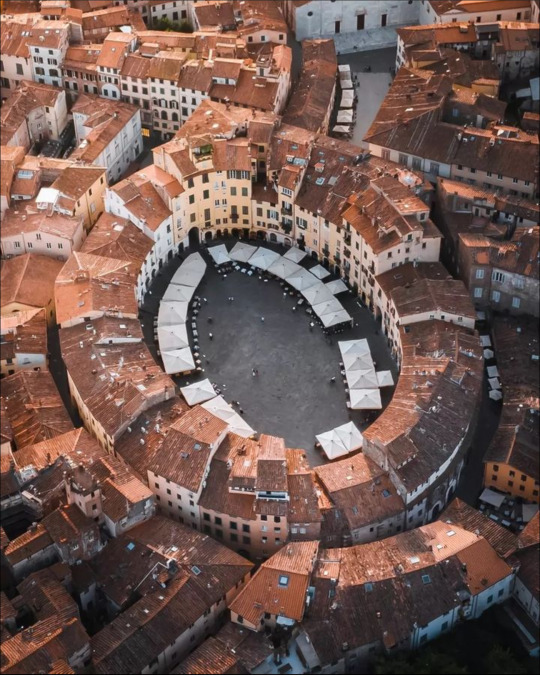
Piazza dell’Anfiteatro, LUCCA, Tuscany, Italy 🇮🇹 by @alelifepics
#Lucca#tuscany#italy#Lucca tuscany#Lucca italy#Lucca Tuscany Italy#toscana#italia#lucca toscana#lucca italia#lucca toscana Italia#italie#italien
694 notes
·
View notes
Text
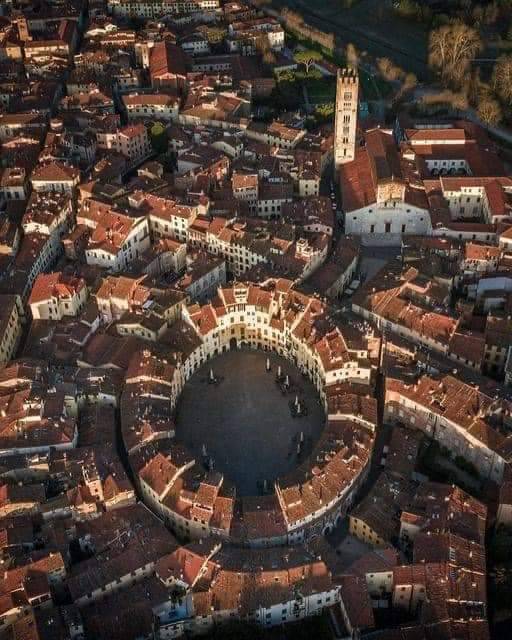
L U C C A
227 notes
·
View notes
Photo

Lucca, Italy (by heimann2)
1K notes
·
View notes
Text
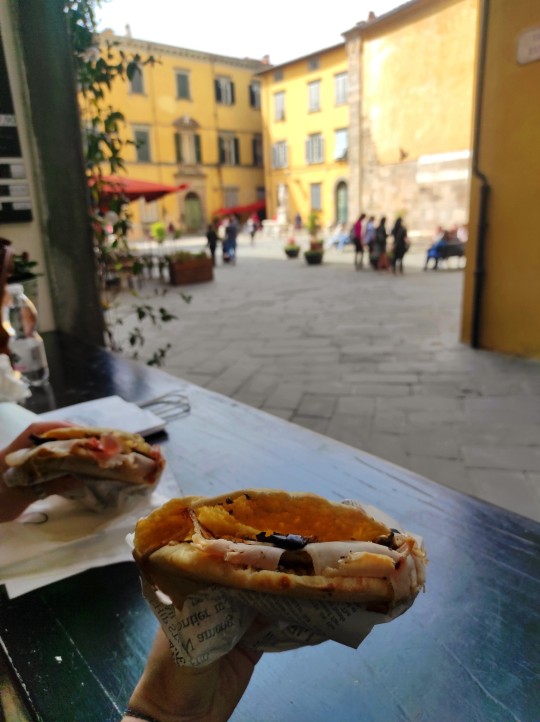

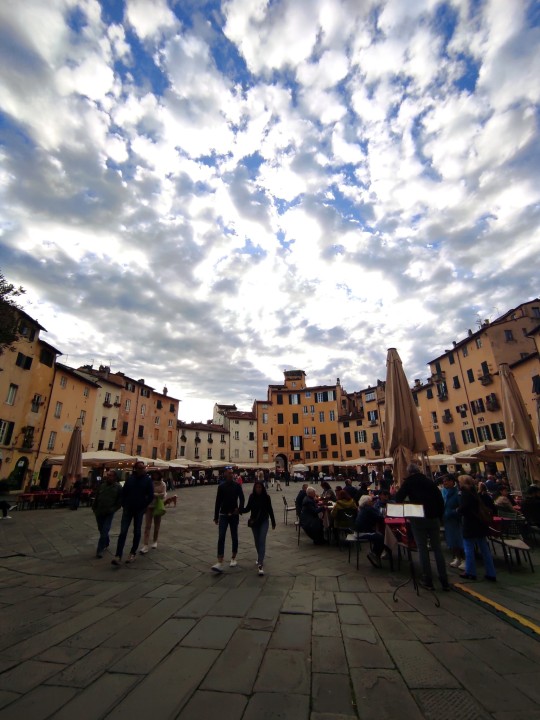
📌 Lucca
39 notes
·
View notes
Text


Meridiana Pavilion of the Pitti Palace in Florence, 1813. Illustration from the Grand Album of Elisa Bonaparte, Princess of Lucca and Piombino, Grand Duchess of Tuscany, and sister of Napoleon Bonaparte.
Joseph Franque
#Joseph Franque#Franque#Elisa#elisa bonaparte#Napoleon’s sisters#Pitti Palace#napoleon#napoleonic era#napoleonic#first french empire#Palace#Florence#Meridiana Pavilion#Tuscany#Lucca#Elisa Baciocchi#napoleon bonaparte#french empire#france#Italy#history
23 notes
·
View notes
Text

#flowers#nature#colors#yellow#bokeh#photography#wood#woodland#forest#federica giordano photography#photographer#federica giordano#tuscany#toscana#bosco#lucca#italian#italy#made in italy#love#travel#travel photography
86 notes
·
View notes
Text
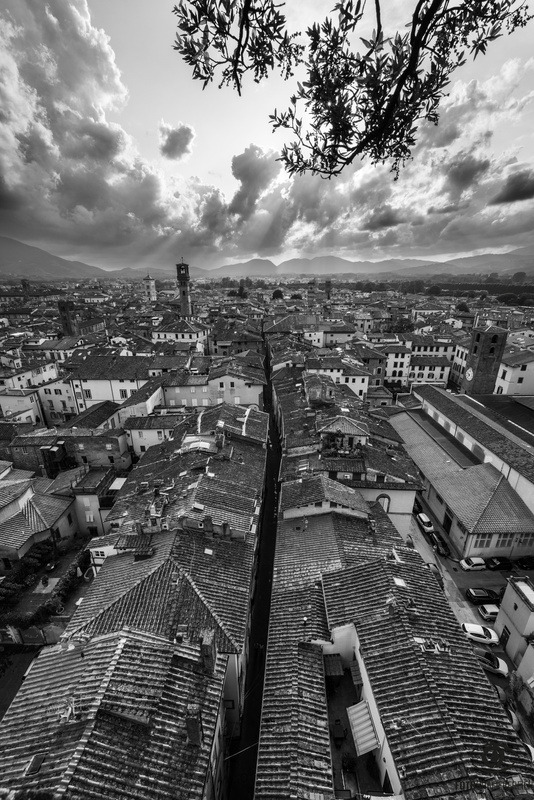
Über den Dächern von Lucca
Mehr Fotos auf www.fotografierereien.de
#torreguinigi#lucca#tuscany#italy#clouds#streets#roof#alley#sun#sunrays#tower#oak#scenic#city#cityscape#blackandwhitephotography#historic#imposing#roofs#urban#old#fotografierereien#haraldbader#fotografie#photography#fotodestages#pictureoftheday
9 notes
·
View notes
Text
Pienza - the Ideal City. The first city built from the Humanistic Renaissance idea of Ideal City.
Pienza Tuscany Italy 🇮🇹 Renaissance Ideal City
#Pienza #Tuscany #Italy #Travel #Renaissance #Skypixel #Drone #architecture #Toscana #Italia #Wanderlust #Spring #Beauty #Relax #Enjoy #Wonder #Journey #WonderJourneys
youtube
#travel#youtube#wanderlust#wonderjourneys#tourism#touristdestination#drone#dji#skypixel#pienza#ideal city#urban planning#unescoworldheritage#unesco#tuscany#Italy#visiti italy#siena#florence#lucca#montepulciano#Val d’Orcia#Toscana#italia#renaissance#architecture
3 notes
·
View notes
Note
Heyyia Claude! 🥰
Ho bisogno de tu ayuda con una mia fic...Qual è per te la città più romantica della Toscana? E che tipo di attività possiamo fare allí?
Better ask first someone native then go look in articles or something...Seems more legit that way! :D
[Ignore the obvious Spanish I left there... 🤭]
Ciao! 🥰
Coucou, Red! Merci de ton patience 🩷 et pour ton ask!
I'm going to answer in English, maybe it can be useful for other people as well! I'm always happy to talk about my region, i love it so much, so thank you again for asking my recs!
I think it depends a lot on the vibes that you are looking for. I will give you an overview of different options, i hope that they can be inspiring. If there's something you like, i can go more into detail! Let me know if i can be of help with anything!
তততততততততততততততততততততততত
If you and your characters love art, Florence is an amazing city.
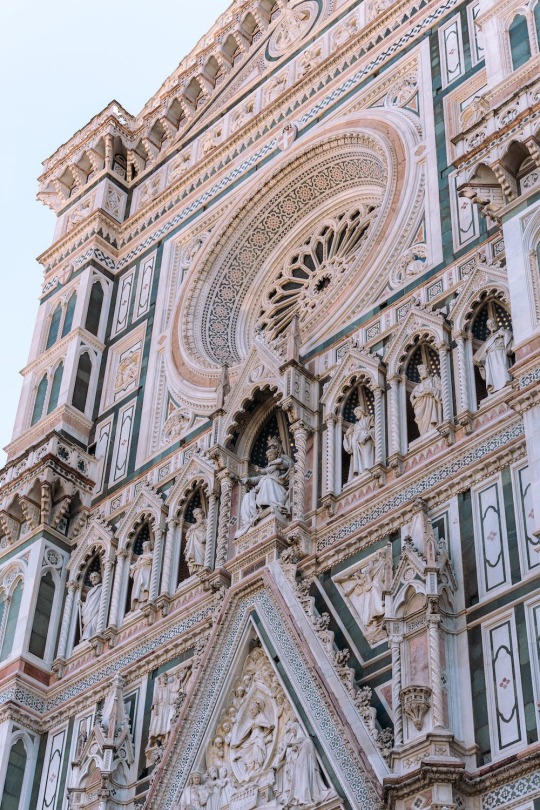
(Duomo di Firenze, Cattedrale di Santa Maria del Fiore, credits pic)
Its art, history and architecture are extraordinary. The Uffizi Gallery (Galleria degli Uffizi) is an absolute must if you love Renaissance. A great way to admire Botticelli, Raffaello, Michelangelo, Leonardo da Vinci and Tiziano's art, in one museum.
Moreover, you can walk around Cathedral Square (Piazza del Duomo), where you can see the Cathedral built by Brunelleschi, Giotto's Campanile and the Baptistery, and Piazza della Signoria, where you can find Palazzo Vecchio, David by Michelangelo and Loggia dei Lanzi, and admire their masterpieces for free. 🏛️
You could also visit the Boboli Gardens, where you can enjoy the Italian garden style, created by the Medici family, that became a model for many European courts.
And a night at the theatre could be a great idea for a date! At Teatro Verdi, for example, there's plenty of different shows!
Obviously, these are just some ideas.
By the way, if i have to be honest, i love Florence, and i always gaze in awe at the beauty of its monuments ...but it's also a little chaotic for my taste. Sooo, maybe for a romantic getaway I would choose something else. (It depends on what you like!)
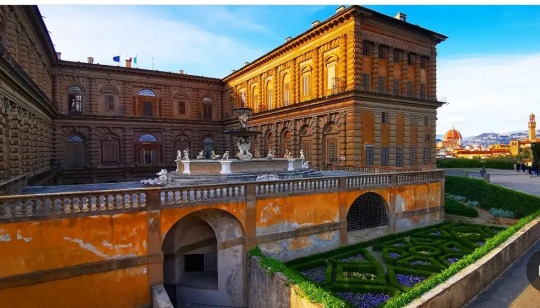
(Boboli Gardens, credits pic)
তততততততততততততততততততততততত
For something more adventurous, what about Grotta del Vento? It's a beautiful system of caves in the Apuan Alps (Garfagnana), with stalactites and stalagmites. Its karst environment is unique and fascinating. 🦇
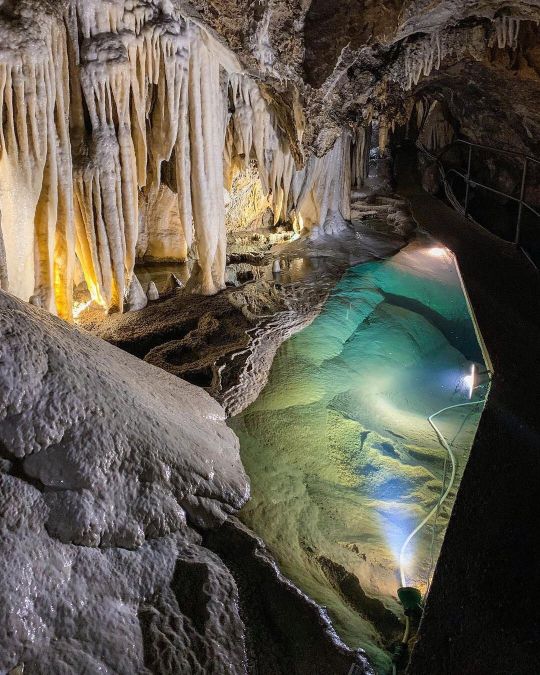
(credits pic)
তততততততততততততততততততততততত
A Tuscanian city that I love is Lucca.
I adore walking along the old city walls (you can go there by bike too!): a panoramic walkway overlooking the city that conceals secret passages, hideaways and ramparts. Their secular trees make the view magic in every season. In autumn, foliage is beautiful! 🍂

(credits pic)
তততততততততততততততততততততততত
If you and your characters love the sea and the story is set in summer, you could take into consideration a mini cruise in the Tuscan Archipelago. In one or two days, you can explore some of its islands, like Giglio, Elba, Giannutri. Swimming there is beautiful. If you don't like the idea of spending time on a boat, the coasts of Monte Argentario are wonderful too! 🌊

(Isola del Giglio, credits pic)
তততততততততততততততততততততততত
There could be less activities than in bigger cities, but I think you could also go for a romantic getaway in one (or more) of our hill towns. Great view, amazing food, and an enchanting experience! And it feels more intimate than in the main cities. Monteriggioni, Cortona, Pienza, San Gimignano, Volterra... The atmosphere is so poetic...And you can spend some time in the surrounding countryside, idyllic!

(Eremo Le Celle, Cortona, credits pic)
তততততততততততততততততততততততত
For a lovey-dovey day, you could write about a day at the thermal springs! There's plenty of thermal baths in Tuscany, and there are usually hotels and spas where you can have lunch, sleep, have a couples massage and enjoy the hot springs. Rapolano, Sassetta, Sorano, Montecatini,... In Tuscany you can find lots of thermal springs, so you could also have a day at the thermal baths and one in a nearby town.
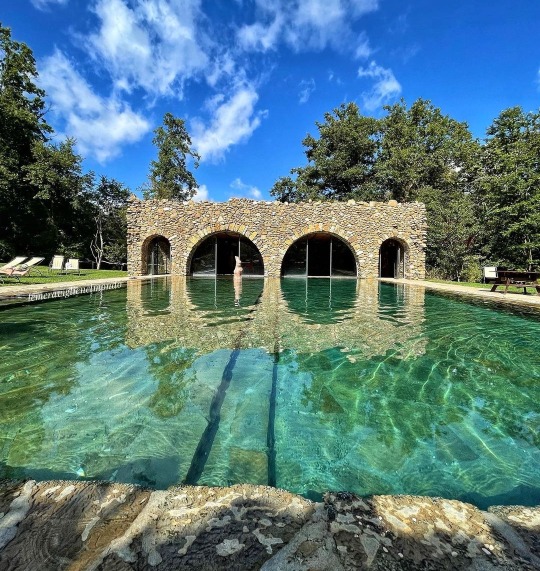
(Terme di Sassetta, credits pic)
তততততততততততততততততততততততত
Wherever your characters go, I think food play a big role if you want them to enjoy their Tuscan trip to the full.
Pasta is always delicious. There are lots of different types of pasta, for example pici and pappardelle (long pasta), tortelli (filled pasta, the filling depending on where you are: for example in Maremma they are filled with ricotta and spinach, in Mugello they are filled with potatoes), topini (small lumps of dough made with potatoes, flour and eggs). Pasta is our first course, in Italy it's not served as a side dish for meat or fish.
(Warning: I'm going to talk about meat dishes. If this makes you uncomfortable, skip until 🌱)
Pasta may be served with ragù (Bolognese sauce, a meat-based sauce), ragù and aglione (aglione is a delicate type of garlic), melted butter and sage, mushrooms, or tomato sauce. 🍝
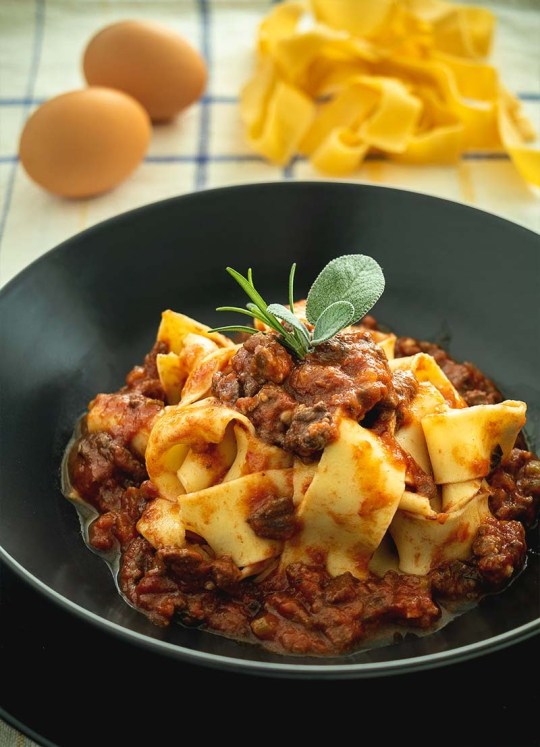
(Pappardelle al ragù, credits pic)
Before pasta, as an appetizer, you may have cured meats (salame, prosciutto, finocchiona, lardo di Colonnata,...), cheese (various types of pecorino), coccoli (lumps of fried dough) and crostini (slices of bread served with ragù, mushrooms, fegatini which is a sauce made of chicken liver, or other sauces...).
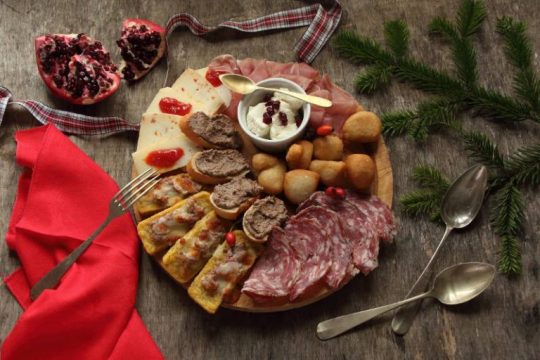
(Traditional Antipasto Toscano - Tuscan appetizers, credits pic)
I don't live by the sea, so i know meat dishes better 😅 As second course, a Bistecca alla Fiorentina or a Tagliata di Manzo (beefsteaks - rare is the perfect way to have them but i get it that it's not to everyone's taste) may be perfect. 🥩
(I also enjoy pizza so much, and you can eat it everywhere in Tuscany, but the foods i've written about are more traditional)
🌱
If your characters enjoy drinking, Tuscany is famous for its wines (like Chianti Classico, Morellino di Scansano, Vernaccia di San Gimignano, Brunello di Montalcino, Bolgheri Sassicaia). Desserts go well with vinsanto (a dessert wine). 🍷
For dessert, you might go for cantuccini (almond biscuits) with vinsanto (we dip them in the wine). If the story is set during Christmas holidays, ricciarelli (almond and sugar biscuits) and panforte (a dessert with almonds and candied fruits) are some of our traditional desserts.
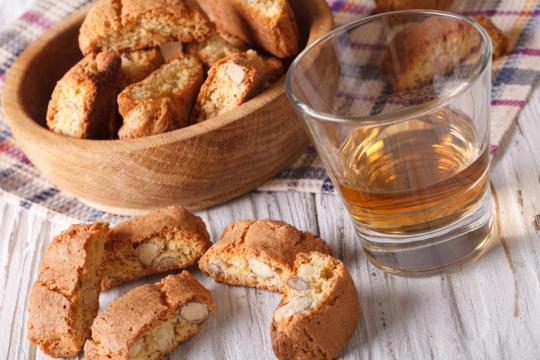
(Cantuccini and vinsanto, credits pic)
You may have coffee after the dessert. And, after generous meals, ammazzacaffè (a small glass of liqueur) too. General recommendation for your characters (and for tourists visiting Italy): it's better not to ask for a cappuccino during lunch or dinner (please 🩷)!
তততততততততততততততততততততততত
I hope this is useful, sorry it took me some time, and please, let me know if i can help you somehow! Je suis si heureuse que tu es en train d'écrire une fanfiction qui se déroule en Toscane 🩷🩷🩷 Je te fais de gros bisous, bonne soirée et joyeuses Pâques 🌷🐰🐣
~ Claude ~
#tuscany#hopefully useful for writers?#what to do and what to eat in tuscany#writing#romantic getaway#toscana#Red! ♥️#thank you for your ask!#helping friends ♥️#helping writers ♥️#florence#lucca#thermal baths#food#grotta del vento#tuscan islands and beaches#hill towns#italy#ask box
16 notes
·
View notes
Note
I'm sorry I've read the discourse about not understanding what Romano should represent and I was going to scroll past it but then I've read the sentence "Rome is considered North Italy" and I was "wait, what? when?" and had to read the whole thing again. Being North Italian, I've never, not even //once//, heard another North Italian consider Rome part of North Italy, sorry. It's either central, or in some cases (because there are people who cut Italy in two with a straight line, line is never wholly defined tho) south. If there are north italians who consider Rome north, it would be a first for me, really.
In any case, I'm going to put my two lire in and say that I've never once scrunched my nose at what Romano needed to represent. In all honesty, Romano feels like a pretty okay rapresentation of Central and South Italy, which definitely includes Rome, as a whole. I agree with the Kingdom of the Two Sicilies etc discourse, but I cannot understand how is it possible to just not... see the roman in him. In any case, if Hima wanted to make things as... historically and geographically correct as possible.... besides a lot of other things he could have done, there would be (insert number here) North Italies as well. North Italy varies greatly too, just like its central and southern counterparts. Being such a complicated nation, all things considered, I think Hima did the best he could to keep things simple.
I hope I made my opinion clear enough, although I know it hardly matters. It's always so difficult to make myself understandable in english lol
for some reason, people seem inclined to split countries into North and South, and any other possible division (like including central) is weird to them. Probably because that's a very American view and most English-speaking hetalia fans are American.
in any case, the reason I'm confused on whether Romano represents Rome or not is because Rome is the capital, so it's very strange to me that Romano would represent the capital but Veneziano would still represent both the North and the country as a whole.
on a side note, if we wanted to talk about stereotypes specifically, Veneziano is even weirder to me? my experience in Lazio, Campania, and Apulia was that the locals got friendlier (and more intent on having you over for dinner) the farther south you traveled. my experience in Veneto and Lombardy was, uh, not quite that friendly. it seems Veneziano should be more stand-offish than Romano.
#ask#anon#I spent most my time in central Italy than either north or south#specifically Lazio and Tuscany#found the friendliness depended on how tourist-y the city was#Rome and Florence? not super friendly#Lucca? very friendly!#I miss Lucca
7 notes
·
View notes
Photo
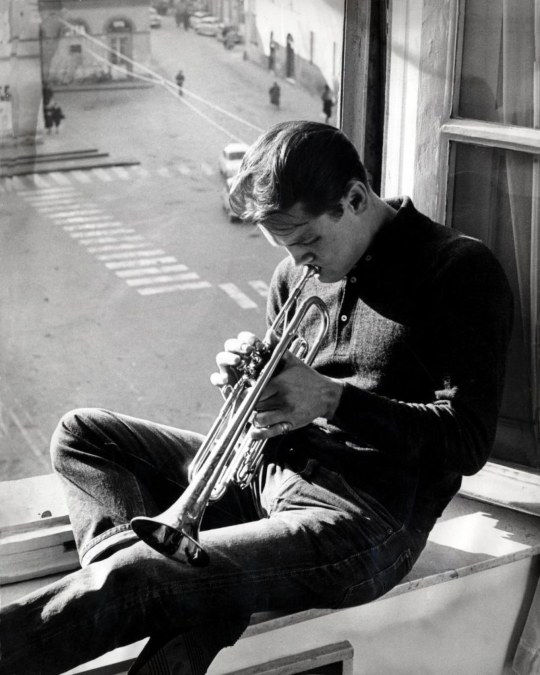
Chet Baker at the window of his room nr 15, Hotel Universo overlooking the piazza of the Teatro del Giglio, Lucca, Italy, 1961.
7 notes
·
View notes
Text

Lucca, Province of Lucca, Tuscany Region, Italy
Tom Podmore
1 note
·
View note
Text
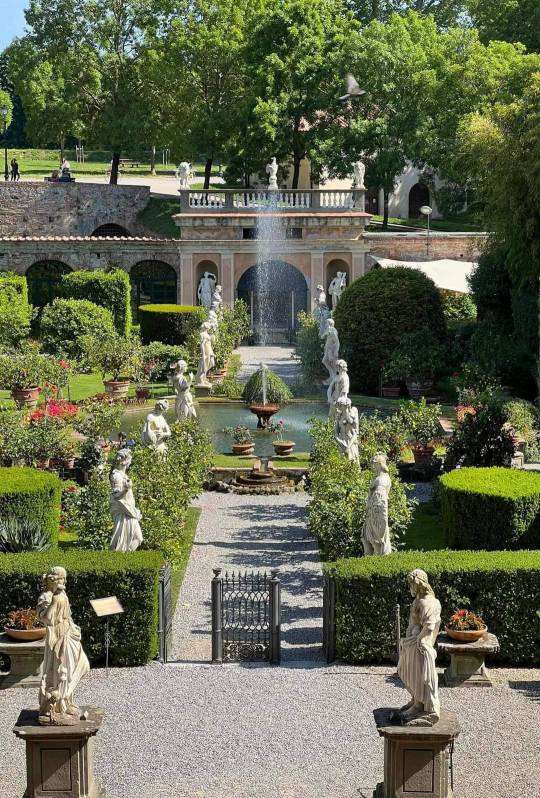
Palazzo e Giardino Pfanner a Lucca, Toscana, ITALIA
#pfanner#palazzo#giardino#palace#garden#palacio#jardin#lucca#toscana#tuscany#italia#italy#europe#europa
100 notes
·
View notes
Text




Lago di Massaciuccoli (2) (3) (4) by Michele Palombi
1 note
·
View note
Video
youtube
Today, we give you a tour of a somewhat typical Italian Apartment and enjoy some of Matteo's delicious pasta while overlooking the gorgeous Lucca piazza below! ✨ 🇮🇹
0 notes
Text
5 minutes with… Elisa and Felix – Napoleon’s most powerful sister and her princely husband
She was at the centre of Europe, yet many have never heard of her […] During a time when women had very few opportunities, Elisa was running the show. She was running the government, the business and the cultural scene.
—William Russell Jr., European Sculpture & Works of Art specialist
———-
For a brief — yet important — moment in history, Napoleon’s sister was one of the most powerful women in Europe. Specialist William Russell Jr. unlocks the story behind Lorenzo Bartolini’s captivating portrait busts of Elisa and her husband, Felix, in their prime
The Italian sculptor Lorenzo Bartolini’s marble busts of Maria Anna Bonaparte Baciocchi Levoy, better known as Elisa, and her husband, Felix Pasquale Baciocchi Levoy, are part of the lasting vestiges of a nearly forgotten dominion of the French Republic that lasted from 1804-1814.
Napoleon Bonaparte’s only sister with political power, Elisa was granted French lands on the western side of the Italian peninsula in 1805, as well as the Grand Duchy of Tuscany in 1809. As the Princess of Lucca and Piombino and Grand Duchess of Tuscany, she was one of the most influential women in Europe during the first quarter of the 19th century.
‘Elisa is exactly what you would hope for — or expect from — a sibling of Napoleon. She was exceptionally beautiful, frighteningly capable, ambitious and smart. She was at the centre of Europe, yet many have never heard of her,’ says European Sculpture & Works of Art specialist William Russell Jr.
A longstanding devotee of the arts, Napoleon had given his sister the town of Carrara in 1806. Since ancient Rome, the flawless white marble found in the city’s quarries has been prized by Italian sculptors and can be found everywhere from the Pantheon to Michelangelo’s Pieta in St. Peter’s Basilica.
In Carrara, Elisa bolstered her prestige as a patron of the arts and promoted her family’s image, all while generating significant business from marble exports. She also established an Académie des Beaux-Arts in town, with the hopes of attracting the greatest sculptors.
There, she began a lifelong collaboration with Bartolini, who she appointed as the director of the academy’s sculpture school. Elisa commissioned him to create several busts of her immediate family, including these two busts of herself and her husband, Felix.
Dating from 1809, the busts show the couple at the height of the French Empire — when the Napoleonic forces seemed almost unassailable. While Napoleon would be exiled to the island of Elba only five years later (where Bartolini would join him in 1814), here, the couple appear at the most significant moment of their lives, shortly after Elisa had been elevated to Grand Duchess of Tuscany.
‘Of course, Florence was the Renaissance, and Elisa was the new Medici,’ Russell adds. ‘Elisa was remarkably modern, and very conscious — as was Napoleon — about her image. Both wanted to make sure they resembled the princes and princesses of the Renaissance. Image was everything — as is no different from today. These sculptures reflect that.’
Both portraits have been carved with delicately refined contours, revealing the sculptor’s renowned technical abilities.
‘What Bartolini really excelled at was his ability to translate antiquity and the Renaissance into a 19th century aesthetic — the Empire aesthetic,’ explains Russell. ‘He created a modern sculpture that was softer and more humanising than classical Greek, Roman and Renaissance statuary.’
While Elisa’s classical drapery is reminiscent of antiquity and the Renaissance, her elegantly modelled hair alludes to the fashions that were prevalent in France during the early 1800s. Likewise, Felix’s hair and clothing are contemporaneous to Napoleonic fashions.
The juxtaposition of textures between skin, clothing and hair, as well as his ability to blend a classical approach with modern sensibilities, exemplify the artist’s neoclassical style.
The busts’ detail and finesse were met with such acclaim, it’s believed that Elisa commissioned an additional 12 portraits of herself, based on this bust on offer at Christie’s.
While Elisa and her husband enjoyed considerable favour during the height of the French Republic, their relationships with each other, and with Napoleon, were often contentious.
When the couple assumed their roles as Prince and Princess of Piombino and Lucca in 1805 — just one year after Napoleon was voted to lead the First French Empire — Felix took only a minor position over their small army, allowing most of the power to be exercised by Elisa herself.
‘Felix was a very handsome man, but she was the real powerhouse,’ Russell explains of the couple’s relationship. ‘They had a very unequal marriage — she was just too influential within her brother’s regime. During a time when women had very few opportunities, Elisa was running the show. She was running the government, the business and the cultural scene.’
Napoleon, who was often at odds with his sister, also never approved of her marriage to Felix, a Corsican nobleman and former captain of the French army. Austrian Foreign Minister Clemens von Metternich is also known to have described him as having an ‘entire want of intellectual faculties.’
While Elisa implemented legislative change inspired by the Napoleonic Code, reformed the clergy, and instituted significant public health and educational change in her principalities, the inhabitants of Piombino and Lucca had little sympathy for Napoleon, Elisa, or their attempts to ‘Frenchify’ the republic after their loss of independence.
Her relationship with her brother also grew increasingly strained. ‘She was Napoleon’s younger sister. They were the closest in temperament, in intellect and in ambition. They were peas in a pod, and they never got along.’
Indeed, in 1820, upon learning of his sister’s death, Napoleon attested that, ‘[Elisa] was a woman of a masterly mind. Had I not been in existence, what is said of the Duchess of Angoulême, that she wears the breeches of the family, might with reason be said of her. She had noble qualities and a remarkable mind; but no intimacy ever existed between us; our characters were opposed to this.’
#Elisa#elisa bonaparte#Napoleon’s family#Felix Baciocchi#lucca#Tuscany#Italy#Piombino#napoleonic era#19th century#first french empire#french empire#napoleonic#France#1800s#napoleon#Bonaparte#history#early 19th century#sculpture#neoclassical#neoclassicism#queen#queens#women’s history#women in art#Lorenzo bartolini#bartolini
10 notes
·
View notes